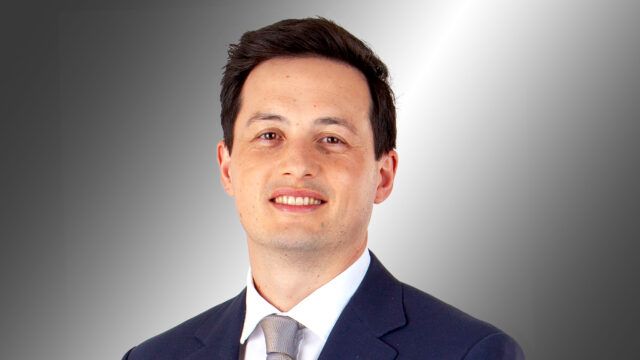The continued bull-run in the so-called “Magnificent 7” stocks has put a lot of pressure on actively managed funds underweight these names.
But active fund managers who cite the outperformance of these mega-cap technology stocks as a reason for their underperformance, are simply making excuses.
This is the view of Richard Clode, manager of the top-ranked $5.7bn Janus Henderson Horizon Global Technology Leaders Fund.
“There’s a complete myth out there that it’s all about mega caps, it’s all about Mag 7, it’s all about the US,” he told FSA in an interview.
“There are a lot of fund managers making excuses for the fact that they underperformed. We’re paid to add value, and our value-add should be to find a way [to perform well].”
Clode’s strategy was underweight some of the best performing Magnificent 7 names last year, such as Tesla and Apple, but it still managed to outperform its peers and benchmark.
Although his fund undoubtedly benefitted from the performance of Nvidia as its top-performer last year, the next highest was Impinj, a US small-cap semiconductor company, then MakeMyTrip, an Indian internet company, then PB Fintech, an Indian internet company and Trip.com, a Chinese internet company
Clode (pictured) said: “You have small-cap to mega-cap, AI semis to companies that have nothing to do with AI, across the US, India and China. As a generalist, why can’t you be overweight Nvidia? Why do you own 300 small caps? Why not own 30 that are actually going up?”
“The ETF doesn’t have a clue”
When new technologies such as artificial intelligence start to emerge and disrupt industries, it creates uncertainty.
This makes it a great time to be an active fund manager in the technology space, according to Clode.
“We beat our benchmark last year because we can identify those AI winners much better than an ETF or an index can,” he said.
“When you get a very established trend, it’s very hard to beat the benchmark when Apple is weighted 20% and Microsoft is 15% and they are the best performing stocks every year. It’s quite hard for us.”
He admitted that during this type of environment where the leaders are well-established and the trends are clear, he would completely understand why a client would buy an ETF or look for passive exposure to technology, but argued that now is not that time.
He said: “Now is the time to get an active, bottom-up stock picker, because you’ve got a market that has stock dispersion due to interest rates actually at a normal level, and because you have a new technology so that you have to understand who the winners are.”
“The benchmark is not going to tell you who that is; an ETF doesn’t have a clue. The index just tells you what did well in the last 10 years.”
Looking ahead, although Clode’s strategy has benefitted from being overweight Nvidia for most of its incredible bull-run, he is beginning to grow more cautious.
The manager has been reshuffling the semiconductor holdings in the portfolio, selling down its Nvidia position, and redeploying it into other semiconductor names such as Broadcom, Marvell and Micron.
These changes were made before the recent DeepSeek development which investors initially feared could dampen the future demand of Nvidia’s AI chips.
Nvidia risks
While a lot of investors have been continually revising up their revenue estimates for Nvidia during the past few years, Clode seems to be wary of an inevitable downcycle.
He said: “Nvidia is still a semiconductor company. It’s still a cyclical company. At some point there will be a downcycle.”
The firm has a history of seeing its revenue suddenly decline after customers stop ordering without warning. The stock experienced over 50% declines in both 2018 and 2022.
Clode said: “In 2018 and 2022, we did not get much insight from CEO Jensen Huang that company was not going to do well.”
“[Instead], you need to talk to their customers to understand where those chips are going and to understand the in-between dynamics.”
He said what often happens is customers need more and more chips, which leads to double ordering until suddenly they have enough chips or the demand for what they require the chips for suddenly collapses.
“That’s what happens to so many companies, which is why they don’t see it,” he said.
“At some point there will be an ‘air pocket’, capex will pause at one of those ‘hyper scalers’ at some point in the next three to four years.”

















